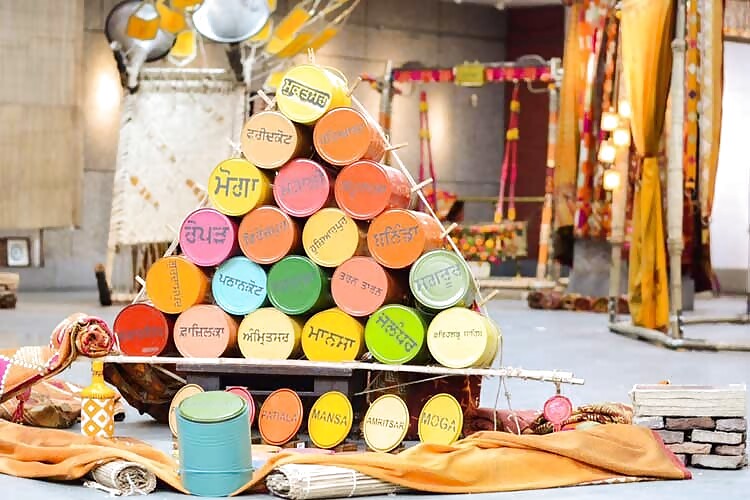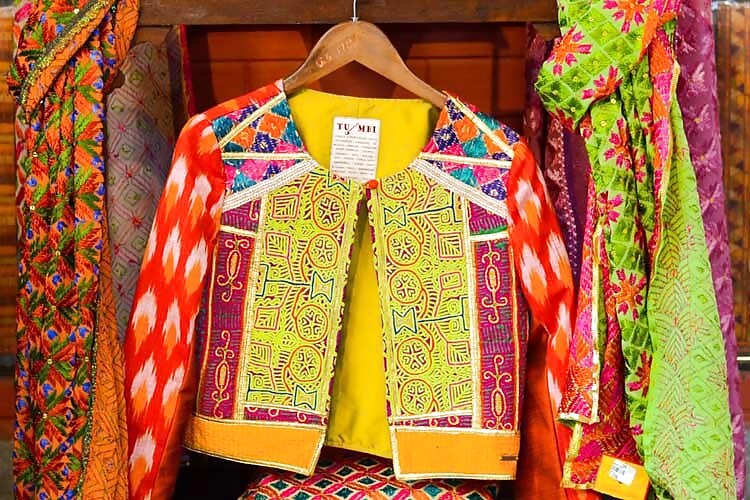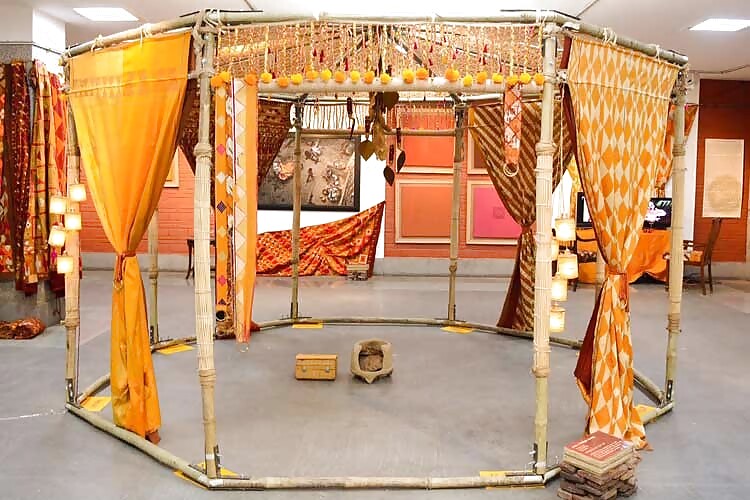
views
New Delhi: An integral part of the rich and vibrant culture of Punjab, Phulkari and its ancient form seems to be losing its essence. To reverse this, Concept 1469 and art historian Alka Pande have come together to celebrate the spirit of Phulkari or 'flower embroidery' in the third edition of 'Mela Phulkari: Threads of Panjab'.
The exhibition put together by Kirandeep Kaur and Harinder Singh of Concept 1469 (a Phulkari store) and Alka Pande is on at the Open Palm Court, India Habitat Centre, till April 17.

Talented artists, designers, photographers and craftsmen have brought in their own reading and understanding of Punjab at the exhibition.
"Even though the textile industry today is imitating this art (of Phulkari) with the help of machines, the rural tradition that was perpetuated by women has almost disappeared in its original form," Kirandeep Kaur said.
"For women, Phulkari was a medium to express. But, over the years, it has been commercialised. The contemporary pattern of Phulkari is very different from the original one," she added.
"People are not very well aware of what Phulkari is. Through our installations, we are trying to define it for the people of Punjab and others," she added.

The cultural extravaganza is hosting a series of book releases, talks, performances and demonstrations throughout the week.
"It has been called a mela to give it the essence of the celebration of different facets of Punjab," said Kirandeep.
The Mela Phulkari festival seeks to showcase the fun-filled lifestyle of this rurally glamorous state through three dimensional art works.
"Mela Phulkari is not just an exhibition but a concept, which I have been exploring with workshop 1469 by collaborating with Harinder Singh and Kirandeep Kaur," said Alka Pande.
"Mela Phulkari has a particular focus on the craft traditions which reveal the identity and politics of the women of Punjab," she said.
"The socio-cultural fabric of the state, the vibrancy, the myths and legends, the stories of women, and the complexity of a woman's dreams of rural Punjab which are being transformed with the rapid economics of development," she added.

The main installation, 'Trinjan Tamb' by artists Harinder Singh, Amrita Mahindra and Simran Kharbanda uses the patchwork of the Phulkari tent structure to describe Punjab's daily nuances of life.
Celebrated photographer Bandeep Singh has showcased his representations, which were shot in Sangrur, a town that was once one of India'sprincely states of India.
A garment installation 'Chanan' by designer Anjali Kalia, inspired from the essence of Punjab through the various eras ranging from the emergence of Sikhism to contemporary interpretations of the same.
"Music is inseparable from Punjab. So, we are giving a tribute entitled 'Gadh jorh' to the old musicians of Punjab who are no more", said Kirandeep.

"The exhibition weaves various myriads of Panjab resulting it to an experience which identifies, accepts and critiques Panjab's past and current socio-cutural stories," said Harinder Singh, creative director of 1469.




















Comments
0 comment